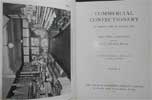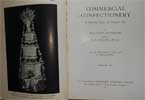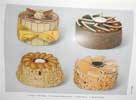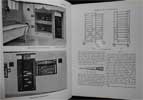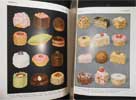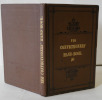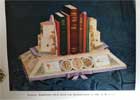A COMPLETE SYSTEM OF COOKERY,
ON A PLAN ENTIRELY NEW; CONSISTING OF EVERY THING FOR COOKS TO KNOW IN THE KITCHEN BUSINESS; CONTAINTING BILLS OF FARE FOR EVERY DAY OF THE YEAR, AND DIRECTIONS HOW TO DRESS EACH DISH; Being One Year's Work, at the Marquis of Buckingham's, from the 1st of January to the 31st of December, 1805. (2 small straight lines). BY JOHN SIMPSON, LATE COOK TO THE MOST NOBLE THE MARQUIS OF BUCKINGHAM, AND PRESENT MAITRE D'HOTEL TO THE RIGHT HONOURABLE LORD BERWICK. (2 small straight lines). SECOND EDITION, CORRECTED AND ENLARGED, With upwards of One Hundred Receipts of Cookery and Confectionary, and a General Index. (straight line). LONDON: PRINTED FOR W. STEWART, (OPPOSITE ALBANY) PICCADILLY.
Circa 1807. 234 x 150 x 60. 4feps. Title Page. [1] vi-iv Dedication dated Sept. 1807. (1)vi Preface. (1)viii - xvi Introduction. (1)2 - 688. (1)690 - 696. 4feps. Title page slightly foxed and dusty. Rest of text block very clean. half marbled boards with black leather spine and tips. Compartments with gold tooling. 2 labels - red and green with gold text. Very good condition.
- John Simpson appears to have been a very intelligent, disciplined professional chef. This thick book is a record of 1 year's menus (1805) for the Marquis of Buckingham. For example, on January 18th the first course consisted of twenty- three dishes. The second course consists of twenty-four dishes. As well as the 'Bills of Fare', there are recipes for all the dishes. This is a meticulous record that had to have been written up from Simpson's own daily records. From Briony Aitchison's article online from the University of St. Andrews Special Collections, she observes; "After noting for whom his work is intended, the introduction then turns to the matter of meat. Simpson is keen that the butcher should deliver it no later than 6am, “for when the sun gets warm, the flies do much mischief”, and he gives instructions for the best ways to prevent the meat spoiling; by salting and by removing various pipes and kernels (glands, or rounded fatty masses) found in the cuts of meat, and how long each cut should be kept. Simpson also advocates fasting animals before slaughter – “twenty-four hours in winter, and forty-eight in summer”. Advising the cook to pay much attention to the management of the larder, one rule being not overstock the larder in summer: “one days meat beforehand is quite sufficient.”. A fascinating and scarce book.





click on image to enlarge

Antiquarian category
ref number:
11275 
